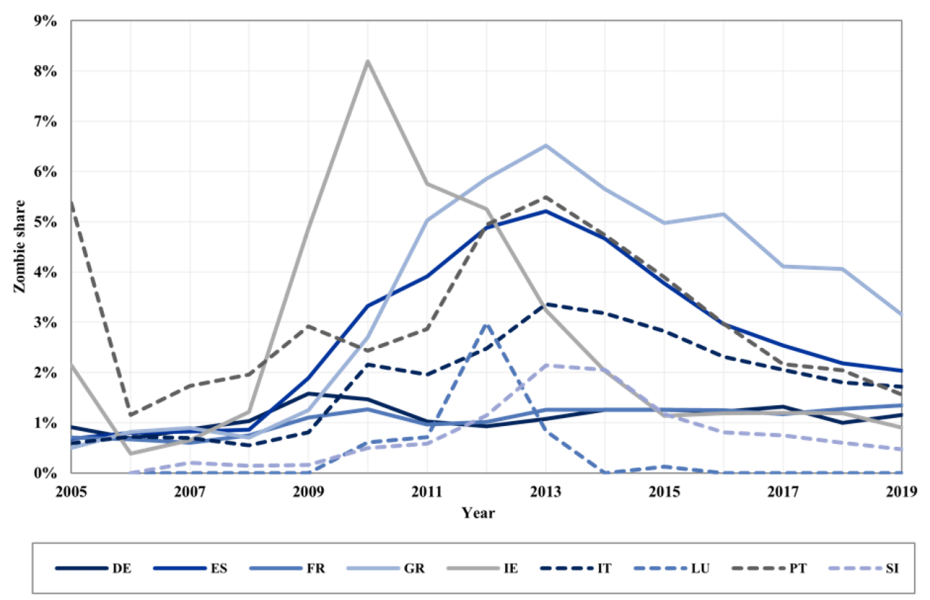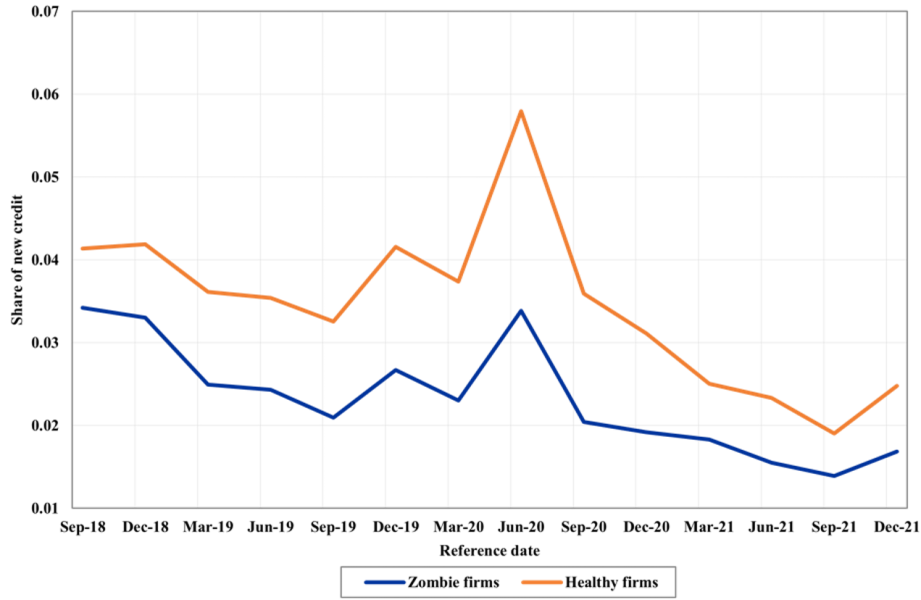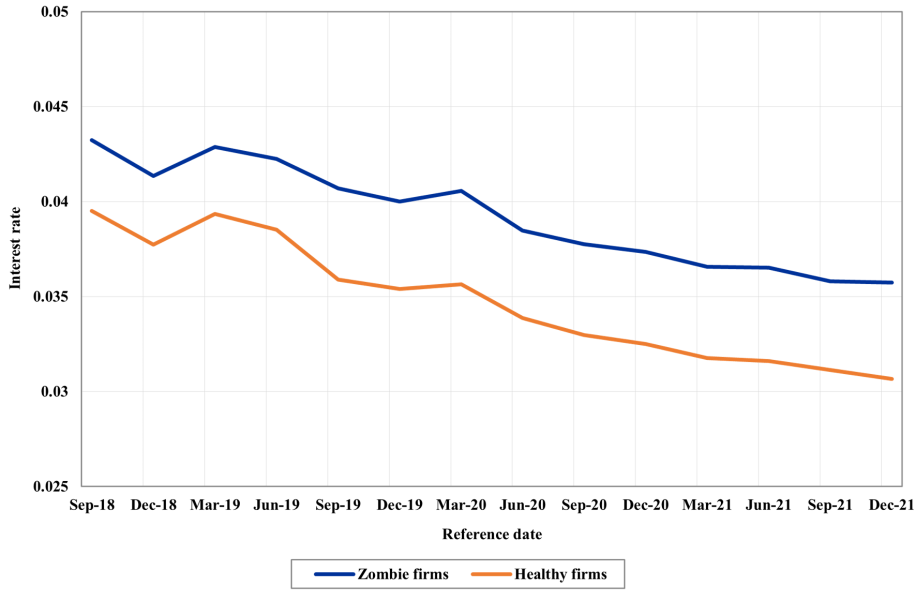References
Acharya, V. V., M. Crosignani, T. Eisert, and S. Steffen. 2022. Zombie Lending: Theoretical, International, and Historical Perspectives. Annual Review of Financial Economics 14:21– 38.
Acharya, V. V., T. Eisert, C. Eufinger, and C. Hirsch. 2019. Whatever It Takes: The Real Effects of Unconventional Monetary Policy. The Review of Financial Studies 32:3366– 3411.
Albuquerque, B., and I. Roshan. 2023. The Rise of the Walking Dead: Zombie Firms Around the World. IMF Working Paper 23/125.
Andrews, D., and F. Petroulakis. 2019. Breaking the Shackles: Zombie Firms, Weak Banks and Depressed Restructuring in Europe. Working Paper 2240, European Central Bank.
Banerjee, R., and B. Hofmann. 2018. The Rise of Zombie Firms: Causes and Consequences. BIS Quarterly Review Sept. 2018, Bank for International Settlements.
Banerjee, R., and B. Hofmann. 2022. Corporate Zombies: Anatomy and Life Cycle. Eco- nomic Policy 37:757–803.
Blattner, L., L. Farinha, and F. Rebelo. 2023. When Losses Turn into Loans: The Cost of Weak Banks. American Economic Review 113:1600–1641.
Caballero, R. J., T. Hoshi, and A. K. Kashyap. 2008. Zombie Lending and Depressed Restructuring in Japan. American Economic Review 98:1943–77.
ECB Podcast. 2021. Bicycles, Bitcoin and Zombie Firms: Financial Stability in the Wake of the Third Wave.
Godby, R., and S. B. Anderson. 2016. Of ‘PIIGS’ and ‘GIPSIs’: Pre-Crisis Structural Imbalances, pp. 75–120. 1st ed. Verlag Barbara Budrich.
McGowan, M. A., D. Andrews, V. Millot, and T. B. Editor. 2018. The Walking Dead? Zom- bie Firms and Productivity Performance in OECD Countries. Economic Policy 33:685– 736.
Pelosi, M., G. Rodano, and E. Sette. 2021. Zombie Firms and The Take-up of Support Measures during Covid-19. Occasional Paper 650, Bank of Italy.
Schivardi, F., E. Sette, and G. Tabellini. 2022. Credit Misallocation During the European Financial Crisis. The Economic Journal 132:391–423.
Storz, M., M. Koetter, R. Setzer, and A. Westphal. 2017. Do We Want These Two to Tango? On Zombie Firms and Stressed Banks in Europe. Working Paper 2104, European Central Bank.








